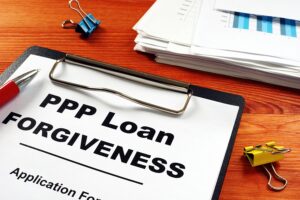PPP Loan Program Infused with New Cash in Emergency Relief Bill
New Rules for PPP Funds Benefit Smaller Businesses
Updated December 27, 2020.
A second round of Paycheck Protection Program (PPP) funding was included in the $900 billion COVID-19 relief bill passed by Congress on December 21, 2020, with new rules designed to funnel the money to small businesses.
The bill was signed into law on December 27, 2020. President Trump had originally signaled he may not sign the bill. He asked Congress to amend it and increase stimulus payments for Americans from $600 to $2,000 per person or $4,000 for couples.
Included in the bill is $284.4 billion for a second round of PPP loan funding, with new eligibility rules written to ensure that small businesses get their share. Criticism arose during the first round of PPP loans in early 2020 when it appeared that the program disproportionately benefited larger businesses, including some that had suffered no revenue losses due to COVID-19. Many small, local Main Street businesses missed out on the loans.
The new legislation includes an extra dose of economic relief for the entertainment and hospitality industries, which have been among the hardest hit by the COVID-19 financial crisis. Included in the funding is $15 billion to benefit such businesses as stage theaters, live concert venues, and museums. Additionally, hotels and restaurants will be able to apply for higher loan amounts than other businesses.
The PPP loan program was created by the Coronavirus Aid, Relief and Economic Security (CARES) Act, enacted in March 2020. Administered by the Small Business Administration, the program provides loans to businesses and nonprofits to help them meet payroll and cover certain overhead costs during the COVID-19 pandemic. Generally, borrowers are eligible for PPP loan forgiveness if they apply at least 60% of the proceeds to payroll. Borrowers whose loans are not forgiven must repay them at a 1% interest rate.
Changes in Eligibility Rules
Under the new eligibility rules, businesses must have fewer than 300 employees to qualify for loans and show they have sustained a 25% revenue loss in any quarter of 2020 (compared with the same quarter in 2019). Additionally, maximum loan amounts in the second round are $2 million, compared with $10 million in the first round of PPP loans. This will help ensure that the loan pool can be spread among more businesses.
Since the eligibility rules are different, it is possible that businesses that qualified during the first round of PPP loans will not qualify for the second round. However, those that do qualify will be able to apply for a second loan, regardless of the status of their applications for forgiveness of the first loans.
How to Prepare
If your company has suffered at least a 25% loss of revenues in one or more quarters in 2020, and has fewer than 300 employees, this second round of PPP loan funding could help sustain you and your employees through the next several months.
You may apply for the lesser of:
- The maximum loan of $2 million, or
- 2.5 times the average monthly payroll costs.
- Borrowers with NAICS codes starting with 72 (hotels and restaurants) can get up to 3.5 times their average monthly payroll costs, again subject to a $2 million maximum.
Loan Forgiveness

As with the first round of PPP loans, the costs eligible for loan forgiveness in the second round include payroll, rent, covered mortgage interest, and utilities. The second round also makes the following potentially forgivable:
- Covered worker protection and facility modification expenditures, including personal protective equipment, to comply with COVID-19 federal health and safety guidelines.
- Expenditures to suppliers that are essential at the time of purchase to the recipient’s current operations.
- Covered operating costs such as software and cloud computing services and accounting needs.
To be eligible for full loan forgiveness, PPP borrowers will have to spend no less than 60% of the funds on payroll over a covered period of either eight or 24 weeks — the same parameters the first round of PPP loans had when the program stopped accepting applications in August.
Additional Provisions
The new COVID-19 relief bill also:
- Creates a simplified forgiveness application process for loans of $150,000 or less. Specifically, a loan will be forgiven if a borrower submits to the lender a one-page certification including a description of the number of employees the borrower was able to retain because of the loan, the estimated total amount of the loan spent on payroll costs, and the total loan amount. Borrowers are required to retain relevant records related to employment for four years and other records for three years, as the SBA may review and audit these loans to check for fraud.
- Repeals the requirement that PPP borrowers deduct the amount of any EIDL advance from their PPP forgiveness amount.
Tax Deductibility for PPP Expenses
The bill also specifies that business expenses paid with forgiven PPP loans are tax deductible. This supersedes IRS guidance that such expenses could not be deducted and brings the policy in line with what the AICPA and hundreds of other business associations have argued was Congress’s intent when it created the original PPP as part of the $2 trillion Coronavirus Aid, Relief, and Economic Security (CARES) Act. This provision applies to loans under both the original PPP and subsequent PPP loans.
 If you would like more information about how your company can qualify for a second round PPP loan, contact your Adams Brown advisor. Our dedicated PPP services team can help you prepare for the application process.
If you would like more information about how your company can qualify for a second round PPP loan, contact your Adams Brown advisor. Our dedicated PPP services team can help you prepare for the application process.
